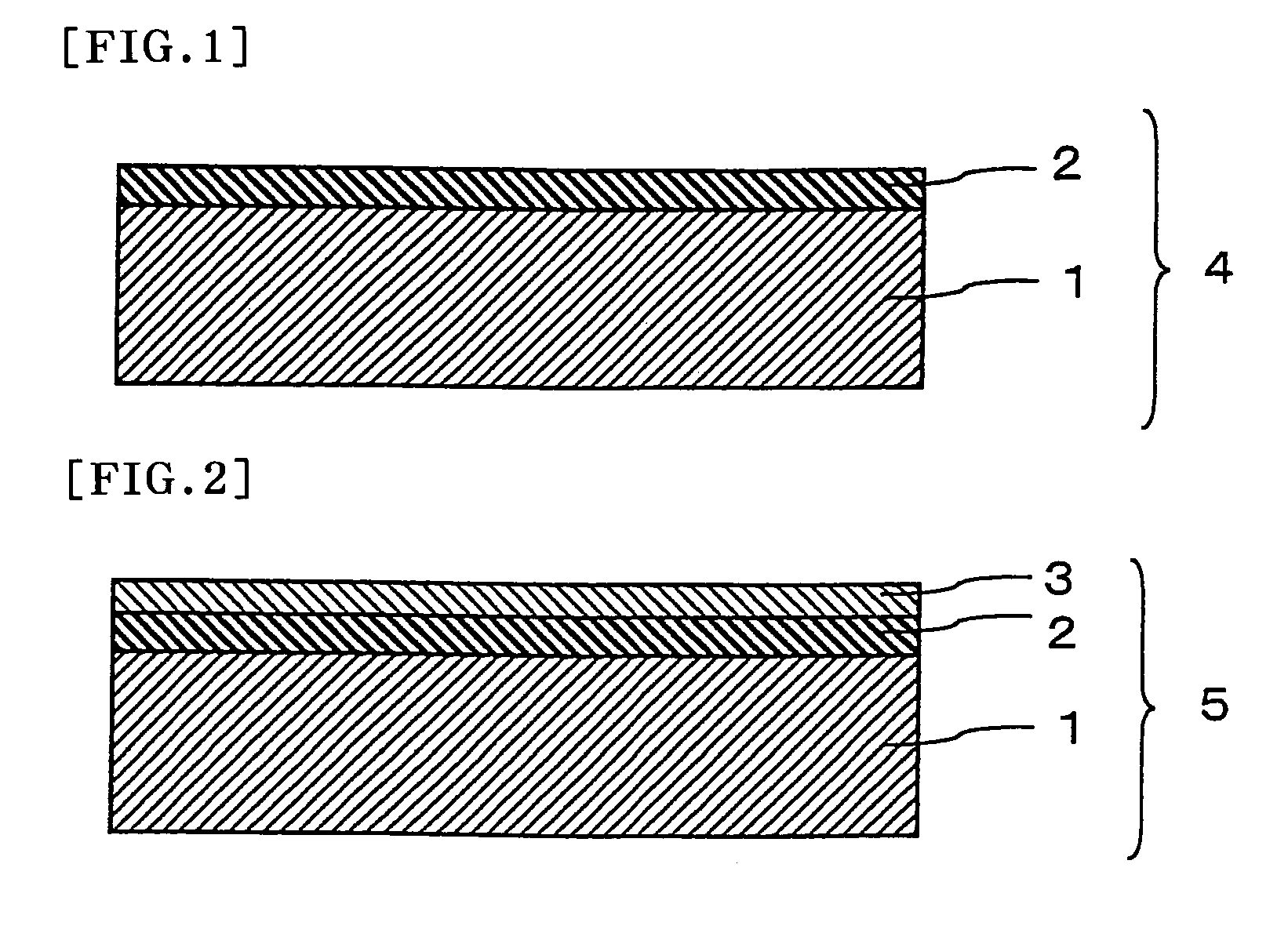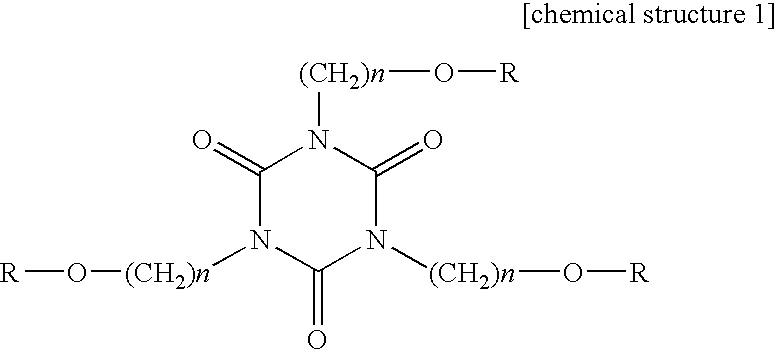Hard coat film, antireflection hard coat film, optical element and image display
a technology of hard coat and optical element, applied in the field of hard coat film, anti-reflection hard coat film, optical element and image display, can solve the problems of difficult to strike a balance between, and achieve the effects of suppressing cracking or curling, reducing inference fringes, and high hardness
- Summary
- Abstract
- Description
- Claims
- Application Information
AI Technical Summary
Benefits of technology
Problems solved by technology
Method used
Image
Examples
example 1
(Transparent Plastic Film Substrate)
[0136] Used as the substrate was a tryacetyl cellulose film having a refractive index of 1.48 and a thickness of 80 μm.
(Hard Coat Layer Forming Material)
[0137] Diluted with a mixed solvent including butyl acetate and methyl ethyl ketone at a weight ratio of 1 to 2 were 100 parts of urethane acrylate obtained from pentaerythritol-based acrylate and hydrogenated xylene diisocyanate as urethane acrylate (A), 20 parts of isocyanuric acid-tris[2-(acryloyloxy)ethyl] as isocyanuric acid acrylate (B), silica ultrafine particles with an average particle diameter in the range of from 10 to 20 nm as inorganic ultrafine particles (C) in a content of 40% relative to all the solid matter and a polymerization initiator (with a trade name of IRUGACURE 184, manufactured by Ciba Specialty Chemicals Inc.) in a content of 3% relative to all the solid matter, so as to obtain a solution with a solid matter concentration of 45% to thereby prepare a hard coat formin...
example 2
(Hard Coat Layer Forming Material)
[0139] A hard coat layer forming material was prepared in a similar way to that in Example 1 with the exception that, in preparation of the hard coat layer forming material in Example 1, a quantity of use of isocyanuric acid acrylate (B) was altered to 10 parts by weight and besides, 8 parts by weight of pentaerythritol tetraacrylate was added.
(Fabrication of Hard Coat Film)
[0140] A hard coat film was obtained in a similar way to that in Example 1 with the exception that in Example 1, the above hard coat layer forming material was used and a thickness of the hard coat layer was altered to 18 μm.
example 3
(Transparent Plastic Film Substrate)
[0141] A tryacetyl cellulose film having a refractive index of 1.65 and a thickness of 75 μm was used.
(Hard Coat Layer Forming Material)
[0142] A hard coat layer forming material was prepared in a similar way to that in Example 1 with the exception that, in preparation of the hard coat layer forming material in Example 1, ultrafine particles of titanium oxide in the range of 10 to 20 nm in average particle diameter were used as inorganic ultrafine particles (C) in a content of 36% relative to all the resin components.
(Fabrication of Hard Coat Film)
[0143] A hard coat film was obtained in a similar way to that in Example 1 with the exception that in Example 1, the above transparent plastic film substrate and the above hard coat layer forming material were used and a thickness of the hard coat layer was altered to 21 μm.
PUM
| Property | Measurement | Unit |
|---|---|---|
| particle diameter | aaaaa | aaaaa |
| thickness | aaaaa | aaaaa |
| refractive index | aaaaa | aaaaa |
Abstract
Description
Claims
Application Information
 Login to View More
Login to View More - R&D
- Intellectual Property
- Life Sciences
- Materials
- Tech Scout
- Unparalleled Data Quality
- Higher Quality Content
- 60% Fewer Hallucinations
Browse by: Latest US Patents, China's latest patents, Technical Efficacy Thesaurus, Application Domain, Technology Topic, Popular Technical Reports.
© 2025 PatSnap. All rights reserved.Legal|Privacy policy|Modern Slavery Act Transparency Statement|Sitemap|About US| Contact US: help@patsnap.com



